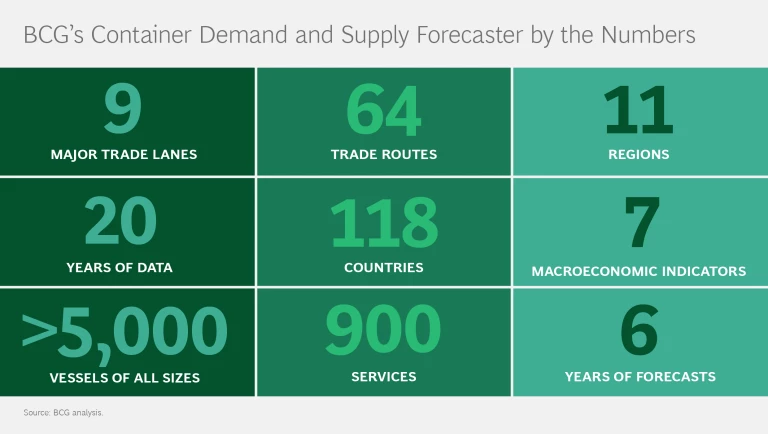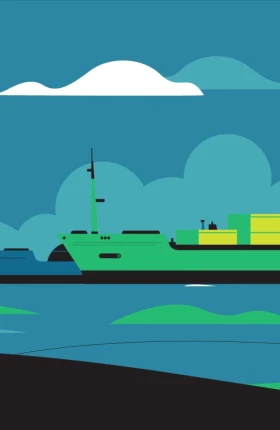Nearly 90% of world trade relies on shipping, yet the industry faces significant efficiency challenges. Companies must have access to the most accurate and detailed shipping container data—and the most advanced analysis of that data—if they are to understand how demand and supply will evolve.
BCG’s Container Demand and Supply Forecaster Tool offers both. It allows companies to assess multiple scenarios for how supply and demand might evolve and to determine the impact on, and strategic imperatives for, the business.
What Does the Tool Do?
BCG’s Container Demand and Supply Forecaster Tool crunches thousands of econometric and shipping data points to help clients use vessel space as efficiently as possible, save time and money, and identify growth opportunities. The proprietary tool taps 20 years of data on trade and macroeconomic indicators and forecasts demand across major trade lanes through 2025.




Why Does Your Shipping Business Need the Tool?
Clients that partner with BCG find that our Container Demand and Supply Forecaster Tool, analysis, and models enable them to:
- Gain a better understanding of the trends in—and outlook for—demand and supply of container vessels
- Analyze demand and supply trends to identify potential disruptors—and understand the implications of those disruptors on specific trade routes
- Use customizable macroeconomic indicators to predict how business will evolve in individual regions and trade lanes
- Determine which commodities will drive container demand in the near future
- Unlock opportunities for growth by using scenario-based modeling across optimistic, pragmatic, and conservative trade outlooks
- Gauge the impact of global disruptions, such as the COVID-19 pandemic and trade shifts between nations, on container trade—and inform the best business response to these evolving situations
How Does the Tool Work?
BCG’s shipping data tool uses a three-pronged approach:



Meet Our Shipping Container Tool Experts
For more information about the tool or our transportation and logistics consulting, please contact:




BCG’s Featured Shipping and Logistics Insights

RELATED EXPERTISE

